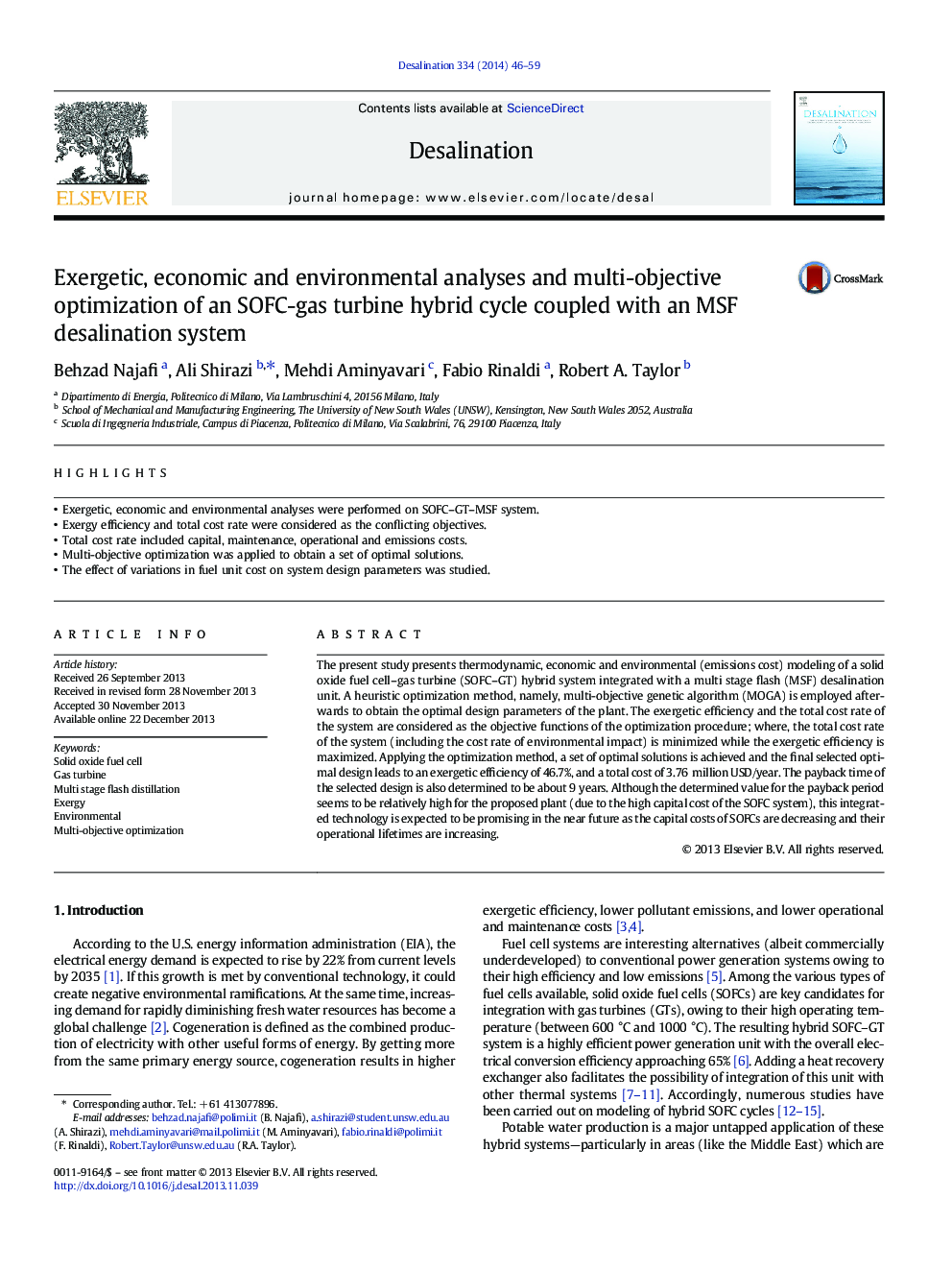| Article ID | Journal | Published Year | Pages | File Type |
|---|---|---|---|---|
| 623721 | Desalination | 2014 | 14 Pages |
•Exergetic, economic and environmental analyses were performed on SOFC–GT–MSF system.•Exergy efficiency and total cost rate were considered as the conflicting objectives.•Total cost rate included capital, maintenance, operational and emissions costs.•Multi-objective optimization was applied to obtain a set of optimal solutions.•The effect of variations in fuel unit cost on system design parameters was studied.
The present study presents thermodynamic, economic and environmental (emissions cost) modeling of a solid oxide fuel cell–gas turbine (SOFC–GT) hybrid system integrated with a multi stage flash (MSF) desalination unit. A heuristic optimization method, namely, multi-objective genetic algorithm (MOGA) is employed afterwards to obtain the optimal design parameters of the plant. The exergetic efficiency and the total cost rate of the system are considered as the objective functions of the optimization procedure; where, the total cost rate of the system (including the cost rate of environmental impact) is minimized while the exergetic efficiency is maximized. Applying the optimization method, a set of optimal solutions is achieved and the final selected optimal design leads to an exergetic efficiency of 46.7%, and a total cost of 3.76 million USD/year. The payback time of the selected design is also determined to be about 9 years. Although the determined value for the payback period seems to be relatively high for the proposed plant (due to the high capital cost of the SOFC system), this integrated technology is expected to be promising in the near future as the capital costs of SOFCs are decreasing and their operational lifetimes are increasing.
